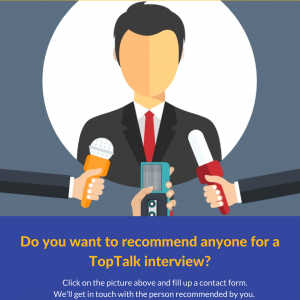 Jill Christensen is a former Fortune 500 business executive, having led Global Internal Communications at both Avaya and Western Union. She is a best-selling author and sought-after international keynote speaker and holds a Six Sigma Green Belt. Jill was named a Top 100 Global Employee Engagement Influencer for 2017 and her popular blog was named a Top 100 Corporate Blog alongside Apple and Microsoft.
Jill Christensen is a former Fortune 500 business executive, having led Global Internal Communications at both Avaya and Western Union. She is a best-selling author and sought-after international keynote speaker and holds a Six Sigma Green Belt. Jill was named a Top 100 Global Employee Engagement Influencer for 2017 and her popular blog was named a Top 100 Corporate Blog alongside Apple and Microsoft.
What does employee engagement mean to you?
Engagement occurs when workers trust leaders and feel an emotional connection to the organization – the same way they did their first day on the job. And the payoff is enormous. Reams of data exists which shows the correlation between profitable revenue growth and employee engagement. Companies in the top tier of employee engagement outperform their peers by 147 percent in earnings per share and have a 90 percent better growth trend than their competition. The benefits of having engaging workers are vast and go well beyond bottom-line results. Engaged workers also:
- Provide better customer service;
- Stay longer;
- Make fewer mistakes;
- Recommend your company as a great employer to their family and friends;
- Are more productive; and
- Are great ambassadors for your brand
How to measure employee engagement?
The best way to measure engagement is to conduct an anonymous employee engagement survey. There are many reputable survey companies in the world – an organization should not create its own survey and think that is going to correctly measure the percentage of people who are engaged, neutral and disengaged. When sending out the survey to employees, it’s important to say, “Our culture is not where it needs to be, but we are going to fix it. By giving us your open and honest feedback, we’ll know the areas to address.”
What are the common causes of employee disengagement?
Employees disengage because their spirit gets chipped away over time in the work environment. Every person who you hired started out engaged, but little by little they began to check out and not care. Common causes of employee disengagement are poor communication, bad managers, boredom, not understanding how what I do every day adds value, poor relationships with coworkers, and lack of confidence in leadership.
What are the drivers of employee engagement in today’s fast-moving world?
From my experience, the strategy to re-engage employees is not difficult nor is it rocket science – it’s basic. You must develop a strategic plan which fulfills your employee’s basic human needs and focuses on four key areas:
- Get the Right Person in Every Chair: Employees want to work for a company whose values align with their own individual values. Therefore, you must get the right person in every chair by hiring for a value match as well as a job skills match. In addition, if you have toxic employees, they must be developed or removed from your organization. Why? Because toxic employees act like cancer – spreading their negativity and incompetence, and impacting the people around them. As you set out to improve your culture and re-engage employees, you cannot afford to have people in the midst who are unwilling – or unable – to get on the bus.
- Create a Line of Sight (Goal Alignment): Employees want to know that what they do every day has meaning and adds value, so you must ensure every person’s goals are aligned with the CEO’s goals. Why? When an employee’s goals are aligned with the CEO’s goals he/she has a line of sight all the way through the organization and can see that they are making a difference. Their job is important and is adding value. What they do is impacting the company’s future and its success.
- Build a Two-Way Communication Culture: Employees want their voice to be heard, so you must build a two-way communication culture where people can express their ideas, opinions, feelings, and complaints. Why? When an employee thinks their voice matters, they feel validated and important. In addition, if you have the right person in every chair, you have smart people working for you. People who are closest to the customer and have amazing insights about what’s working, what’s not and what could be improved.
- Recognize People: Employees want to feel acknowledged and appreciated for a job well done, so you must create a recognition program that is based on thanking people for their great work. Why? When you give an employee a company-branded water bottle, you’ve done nothing to let them know specifically what they did that is recognition-worthy. Put away the water bottle and replace it with the words Thank You. Hearing those two words is a basic human need and it will inspire your employees to give you a lot of discretionary effort.
What makes a really effective employee engagement journey?
In order to get measurable results, organizations must stop outsourcing employee engagement/culture change to Human Resources (HR). This is not a dig against HR; strategic HR people are wonderful. However, although HR “owns” culture, they don’t “own” culture. The definition of culture is How We Do Things Here. There is no group of people who set the stage more for How We Do Things Here than your senior leaders. Senior leaders “own” culture. Therefore, in order for you to succeed, you must engage your senior leaders in your employee engagement strategy. They, in turn, will empower the frontline managers to execute on the employee engagement strategy. Because if you think about it, senior leaders can get managers to do things that HR cannot!
How do you engage senior leaders in employee engagement?
Data. Executives love numbers. Why? Because you don’t get to be an executive without learning a thing or two about numbers. Executives present numbers to their boards all the time and are judged on their ability to ensure the numbers are directionally correct. Therefore, gather all of the compelling data you can find which shows the correlation between employee engagement and profitable revenue growth, and share it with your senior leaders (data can be found on my website). Savvy leaders will get it and will agree to champion employee engagement and empower the managers to act.

2 thoughts on “Jill Christensen, Employee Engagement Expert, Jill Christensen International”